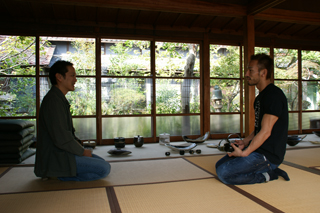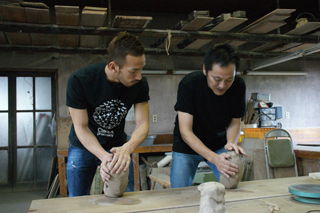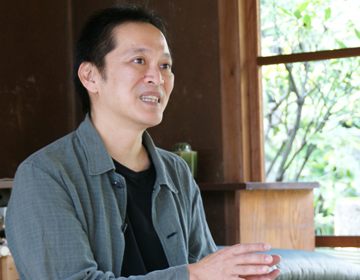 |
”Shuntei Kato” inherits pottery associated with the legendary founder of potteryIn the history of Japanese pottery, there is a person known as the ”Father of Pottery”. This is Shirozaemon Kato, who travelled to Southern Song dynasty in China to study pottery during the early Kamakura period. After coming back to Japan, he travelled all over the country in search for good soil, and in the end settled in Seto to start pottery. This is said to be the beginning of pottery in Japan, therefore he is called the ”Father of Pottery”. Seto is known as the town of pottery where many prestigious establishments associated with the founder exist. One of the establishments is a pottery kiln, whose successive owners inherit the name ”Shuntei Kato”. ”Shuntei Kato” the first was lauded as the master of pottery, and Jun Masuda, the great tea master of the time is said to have visited him multiple times. Shuntei the second had a style different from that of the first, and he made works in powerful Momoyama style. ”Hikidashiguro” has become synonymous with his works. It is a technique to bring out the jet black color to the surface by taking red hot vessels out of the kiln, and putting them in cold water. The texture of the vessels become very smooth, and the gap between the powerful appearance and the gentle texture of the vessel when brought to the mouth is interesting. |
The fascination of ”hikidashiguro”We interviewed Shuntei the third, who inherited the name in 1997. When he started pottery, he mainly created art pieces, but after he took over ownership, he was so fascinated by ”hikidashiguro”, he began to create pieces in this style. Traditional Seto-yaki, the ”hikidashiguro” of the former master, and the works of Shuntei the third represent the perspectives of the past, present and future. Nakata was taught how to use the pottery wheel and how to knead clay. There are two reasons the clay is kneaded. One is to even out the hardness, and the other is to remove air from the clay. Nakata worked on the clay, watching and copying Shuntei Kato. Nakata was able to experience the basics of pottery. |
 |
ACCESS
- Ceramic Artist Shuntei Kato
- Seto city, Aichi
 Discovering Japan [Nihon] through authentic craftsmanship [Honmono]
Discovering Japan [Nihon] through authentic craftsmanship [Honmono]